
In Infernum
Third Year 2024-2025
Building project UG08
Seismic metal forming

Third Year 2024-2025
Technical dissertation UG08

Holy frequencies
Third Year 2024
Installation project UG08
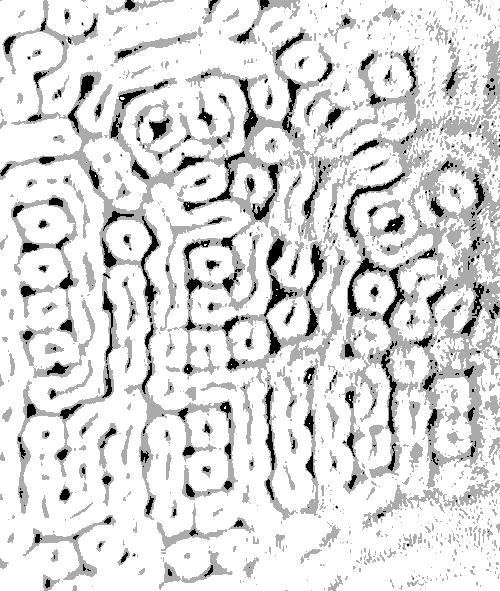
Marsh island
Second year 2023-2024
Building project UG01



Third Year 2024-2025
Building project UG08

Third Year 2024-2025
Technical dissertation UG08

Holy frequencies
Third Year 2024
Installation project UG08

Marsh island
Second year 2023-2024
Building project UG01

BSc Architecture Year 3
Location Naples, Italy
Typology Motel
Year 2024-2025
The project is sited above the Campi Flegrei volcano, a large underground magma chamber to the West of Naples city centre. The site sits on the rim of the Solfatara caldera, a crater left behind from an ancient eruption of the Campi Flegrei volcano. The caldera seeps sulphur, heat, and seismicity, and part inspired Dante's inferno, historically believed to be one of the 'Gates to hell'.
The project is a museum and motel experience for volcano chasers, originally sparked by the fire of love film.
The project celebrates the volcano it is sited above, as well as the rich historical and spiritual context of the site. The building seeks to be a gathering space for those passionate about volcanoes with spaces for observation onto the caldera, collaborative research, worship, and performance, alongside accommodation.
Seismic risk becomes a design material as the building incorporates a sacrificial crush zone between two outer wall layers which has been explored in the technical dissertation.



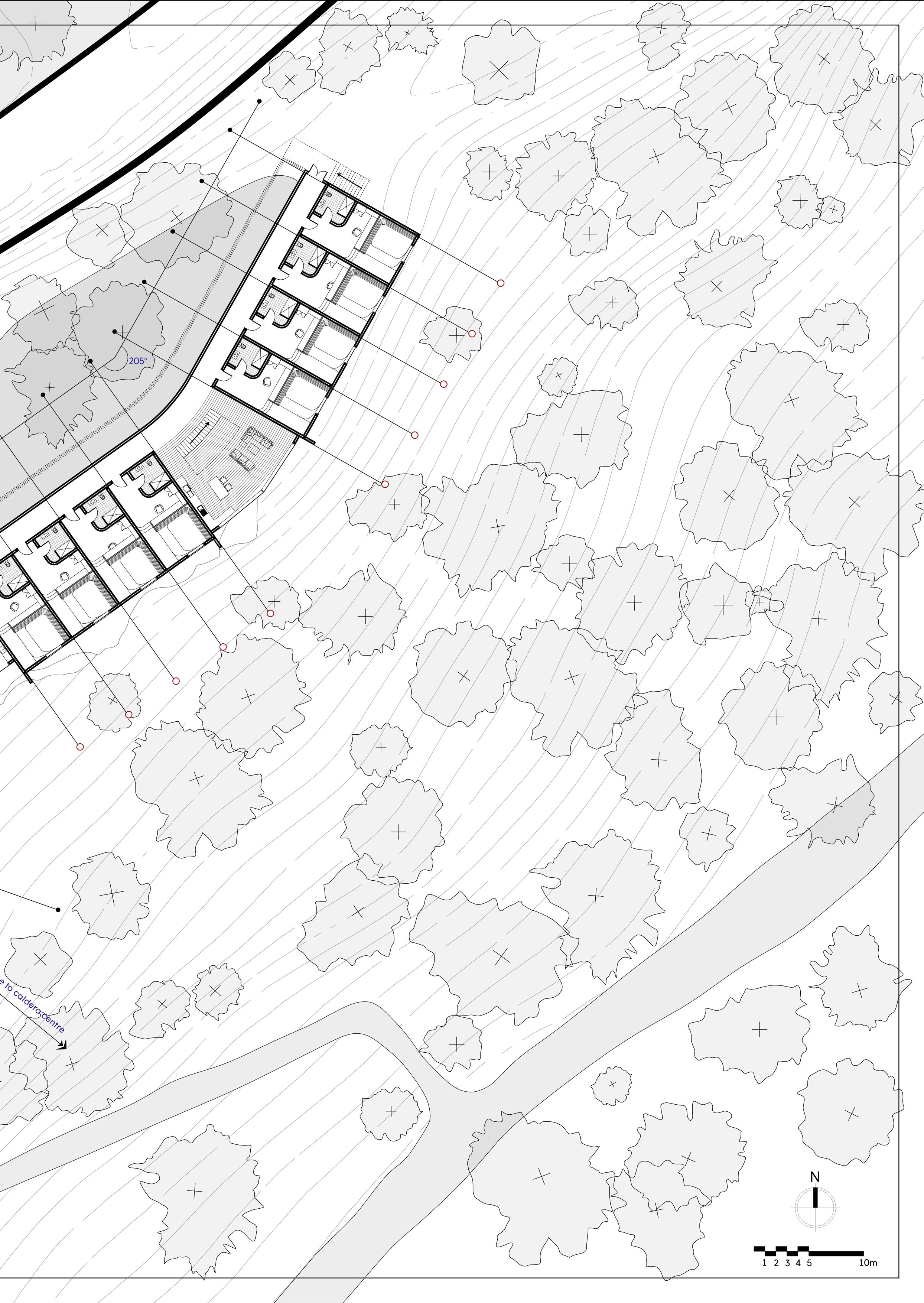




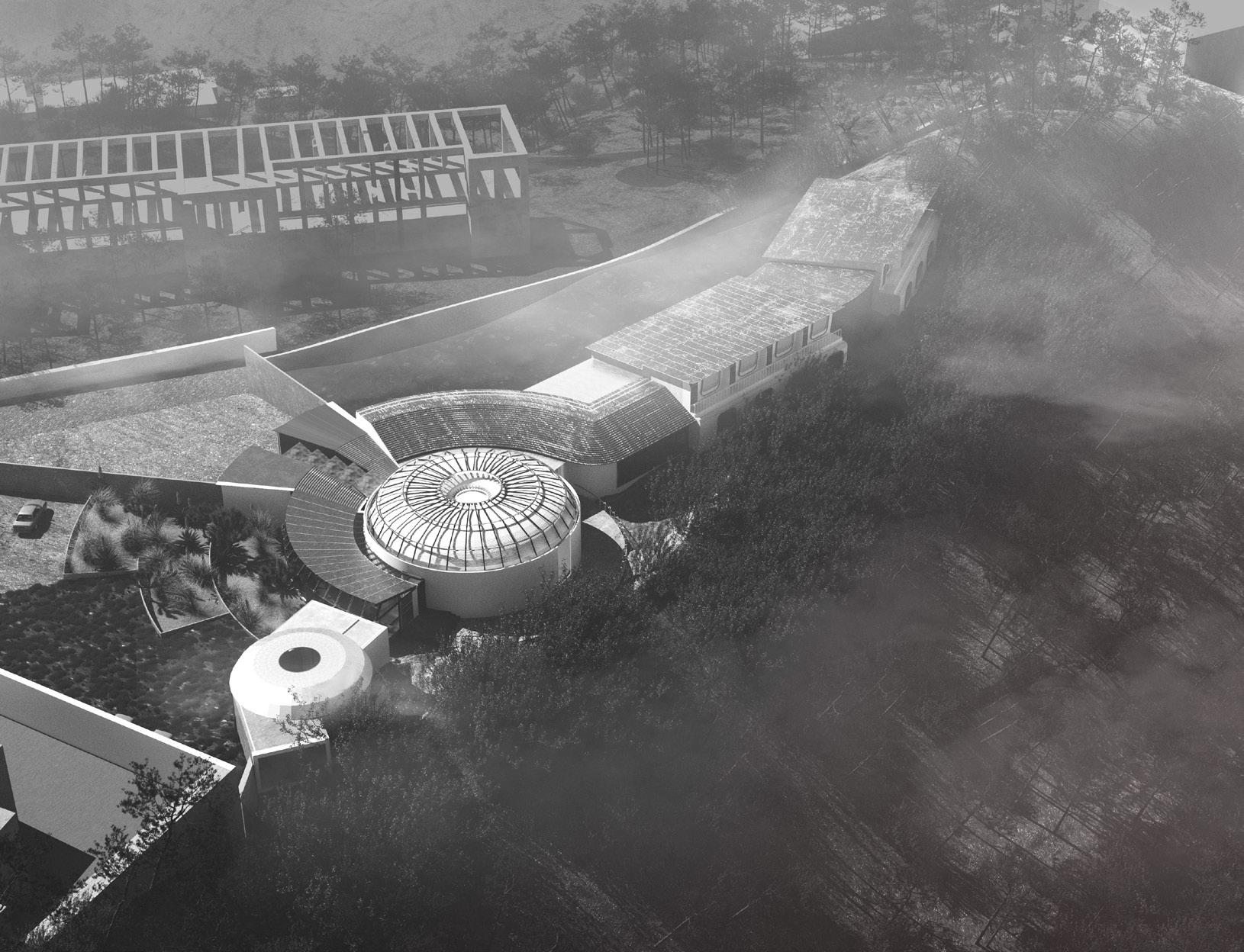


1.5000
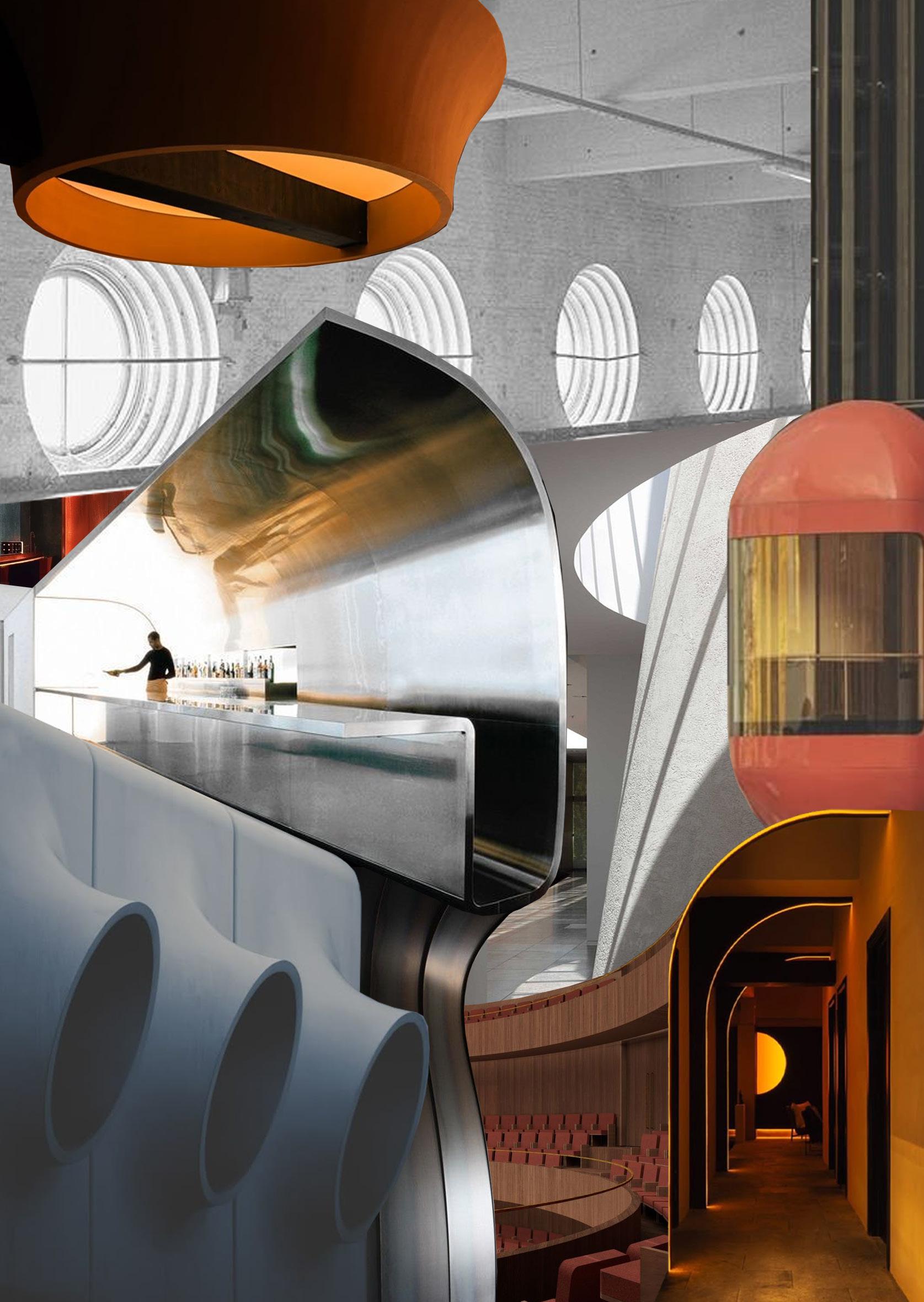
Reference elements collage, Photoshop
BSc Architecture Year 3
Location Naples, Italy
Typology Motel
Year 2024-2025
This project proposes a sacrificial device designed to extend the life cycle of concrete structures in earthquakeprone regions.
The project began with research into different approaches to seismic design and the impact these strategies have on the post-earthquake life cycle of buildings. Through this research, the concept of resilience emerged as a central challenge. Many buildings, even those that remain standing, are often demolished after earthquakes due to seemingly minor cracks other damage . These issues, although visually small, can cause irreversible damage to the concrete, making repair not feasible and leading to demolition at a significant environmental cost.
The proposed solution focuses on using modular and replaceable metal components with high energydissipation ranges. By exploiting the ability of certain metals to dissipate seismic energy through plastic deformation, these sacrificial devices can reduce the amount of energy transmitted to the concrete structure. In doing so, they help prevent structural damage and extend the usable life of buildings after an earthquake.

Energy dissipation comparison for materials


Assessing deformation directions for potential designs
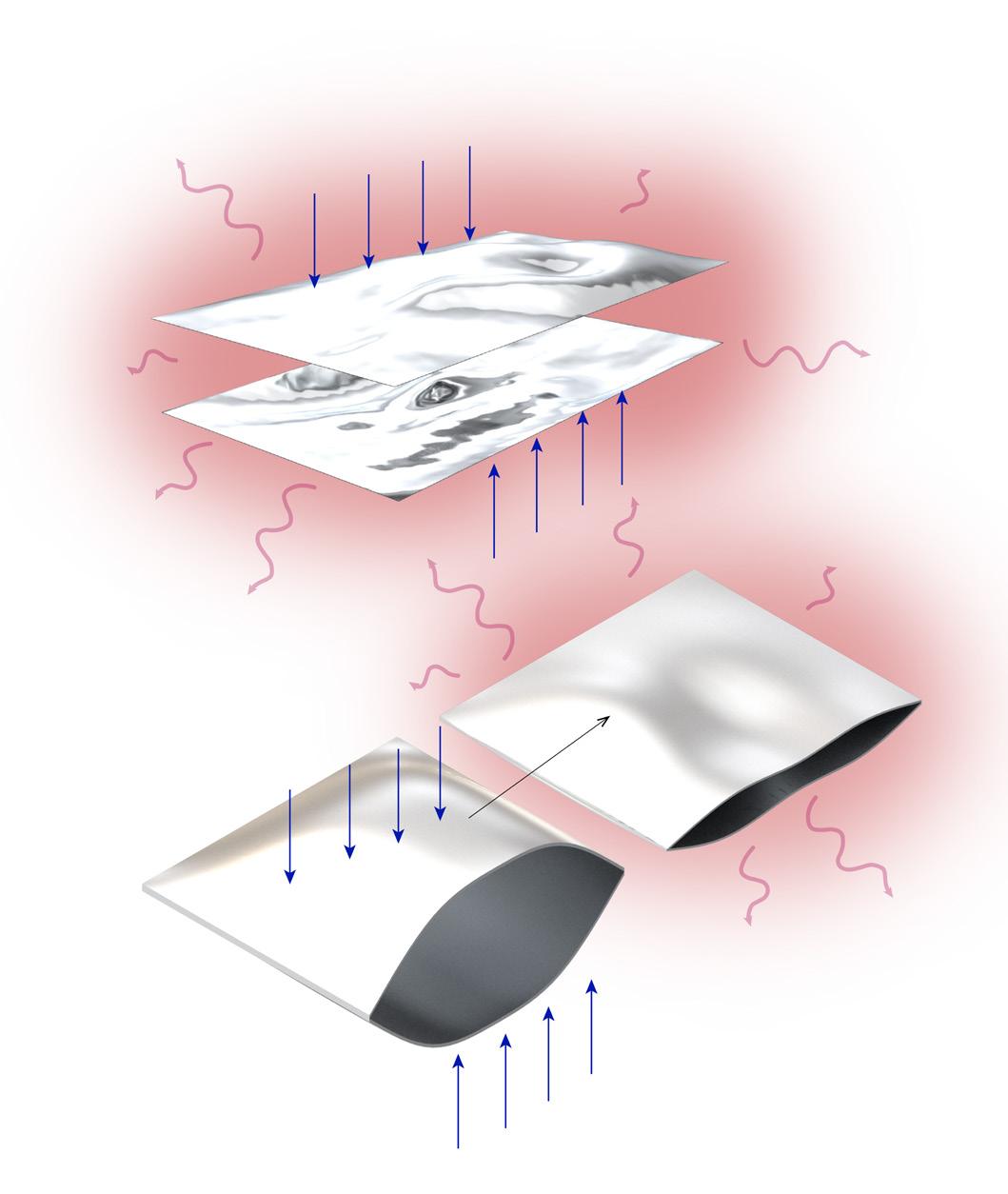
Visually describing core physical phenomena

Device deforms both inward and outward protecting concrete
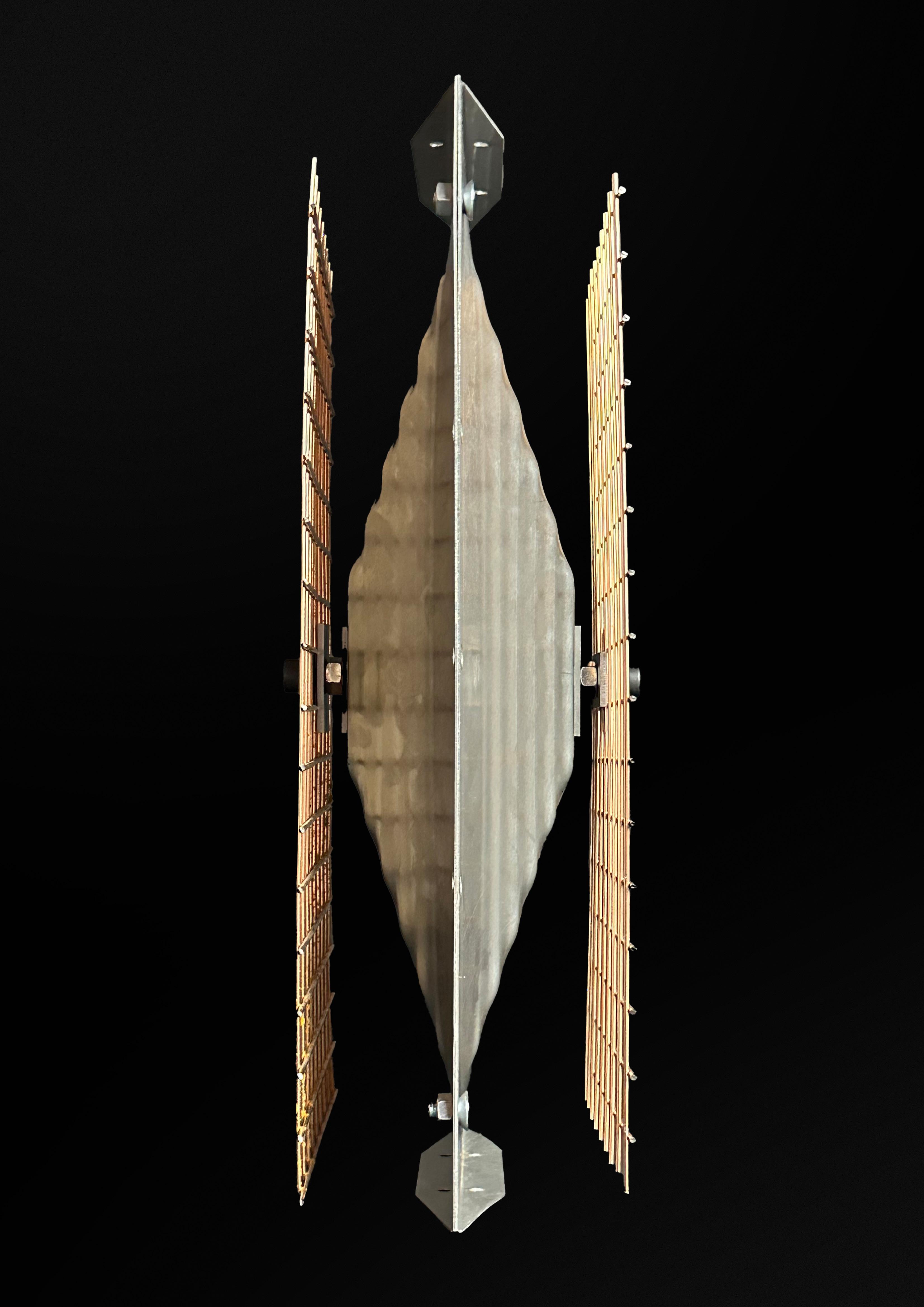
Device is attached to steel reinforcement in the concrete ensuring the concrete does not immediately fracture when point force is applied.
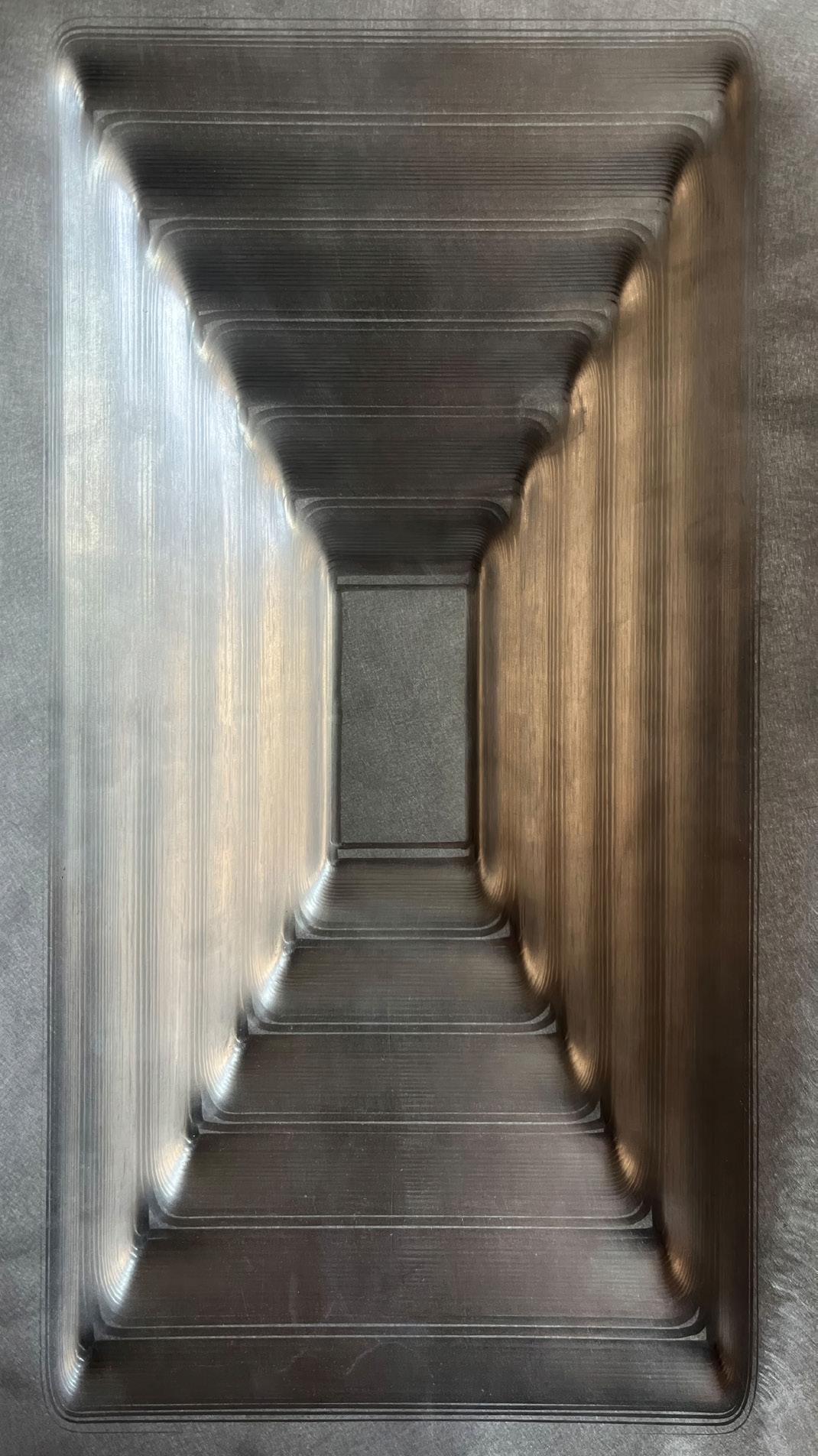
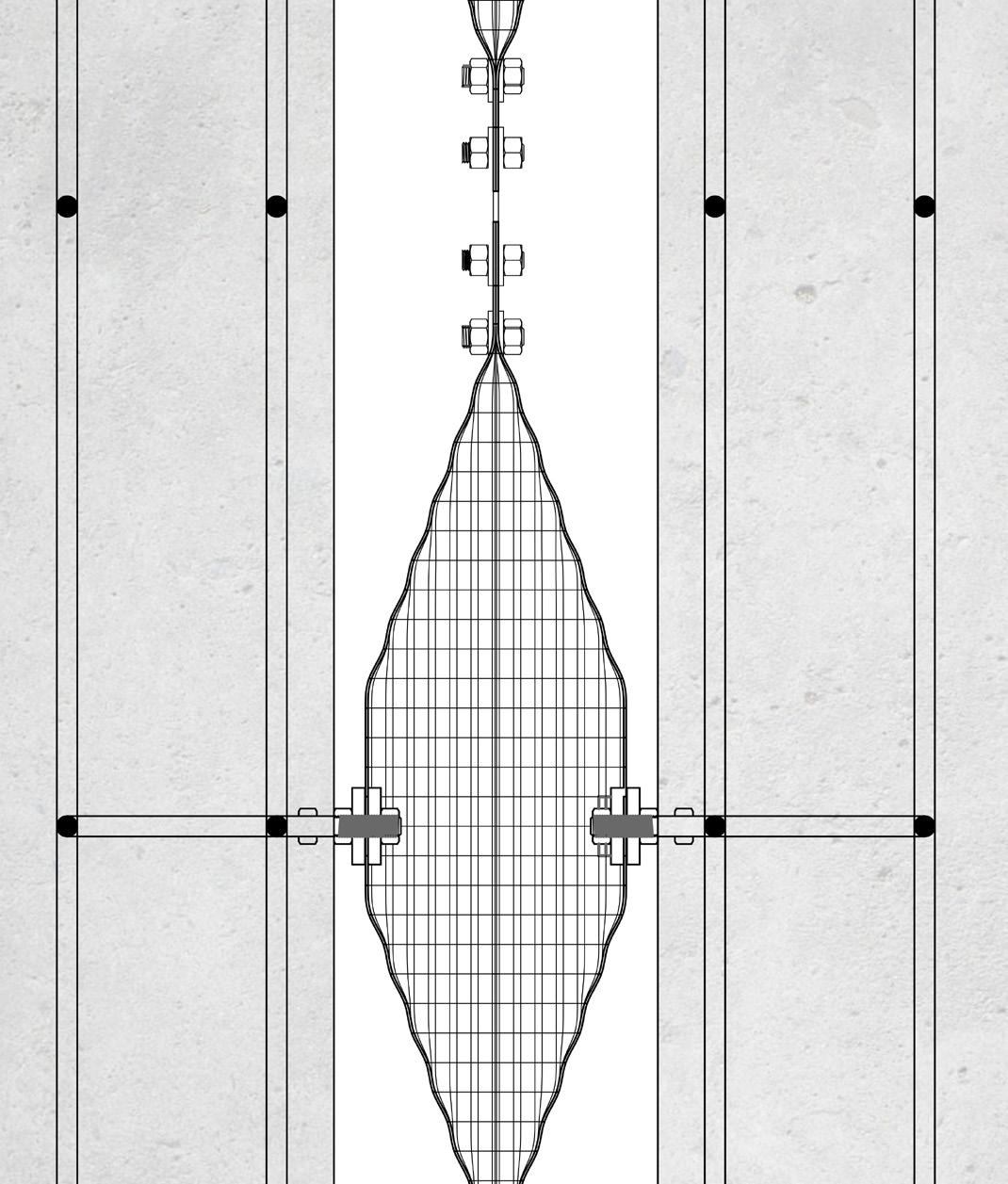




The device was tested under the hydraulic press to analyse deformation then tested horizontally with a 10 kg weight to try to replicate an earthquake event. Comparisons between the concrete after the drop with and without the damper showed the device performing its desired function.
BSc Architecture Year 3
Location Portland, Dorset
Typology Installation
Year 2024
This project is an experimental installation inspired by its site.
The Isle of Portland sits to the South of the English coast, with the island itself displaying believed sacred geometries drawn from the positioning of ancient and important sites. The island is also believed to have two 'ley lines'- lines of high energy drawn between historical sites. At the intersection between a Portland ley line and a sacred geometry sits St George's church above the Bowers quarry mines, in which the installation is sited.
The project aims to connect the themes of water, sound, stone, geometry, and vibration by focusing on a device sited in the mine. Collecting water from the fault lines above, the device then filters out the stone, purifying and then guiding it onto a dish which vibrates at certain frequencies to produce natural patterns. It is this device which I find to act as a tool for healing.
'Sacred frequencies' are specific sound frequencies that some people believe carry spiritual or healing properties. Thought to resonate with the body, mind, and soul, these frequencies help to induce states of relaxation, meditation, and even healing. Cymatics therefore reveals a strange & beautiful symmetry at work in nature.
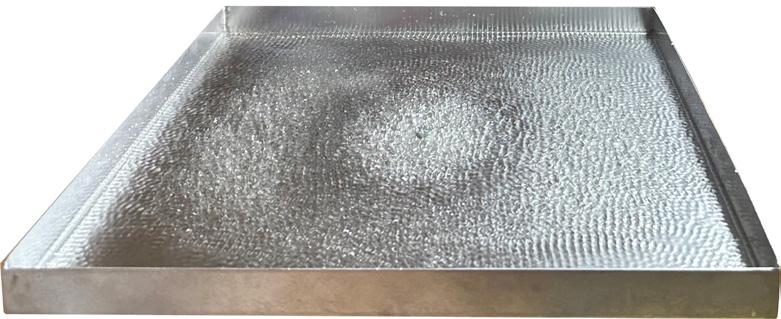
Making an aluminium chladni plate and testing resonant frequencies
Resultant patterns from different frequencies



installation axo

Hand sewn filtration devices
Adjustable acrylic vibration isolator
Vibration generator built from adjusted speaker
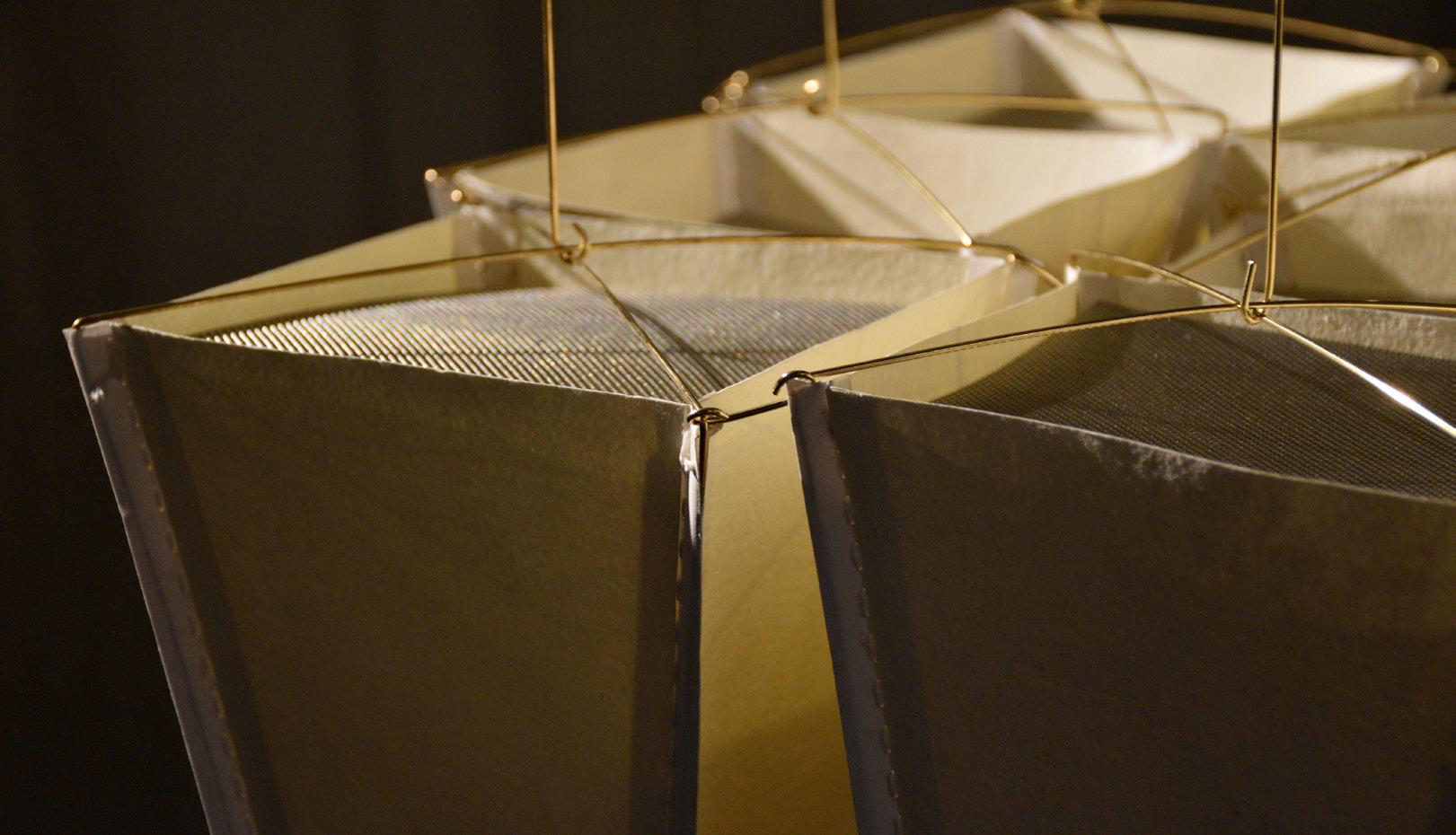

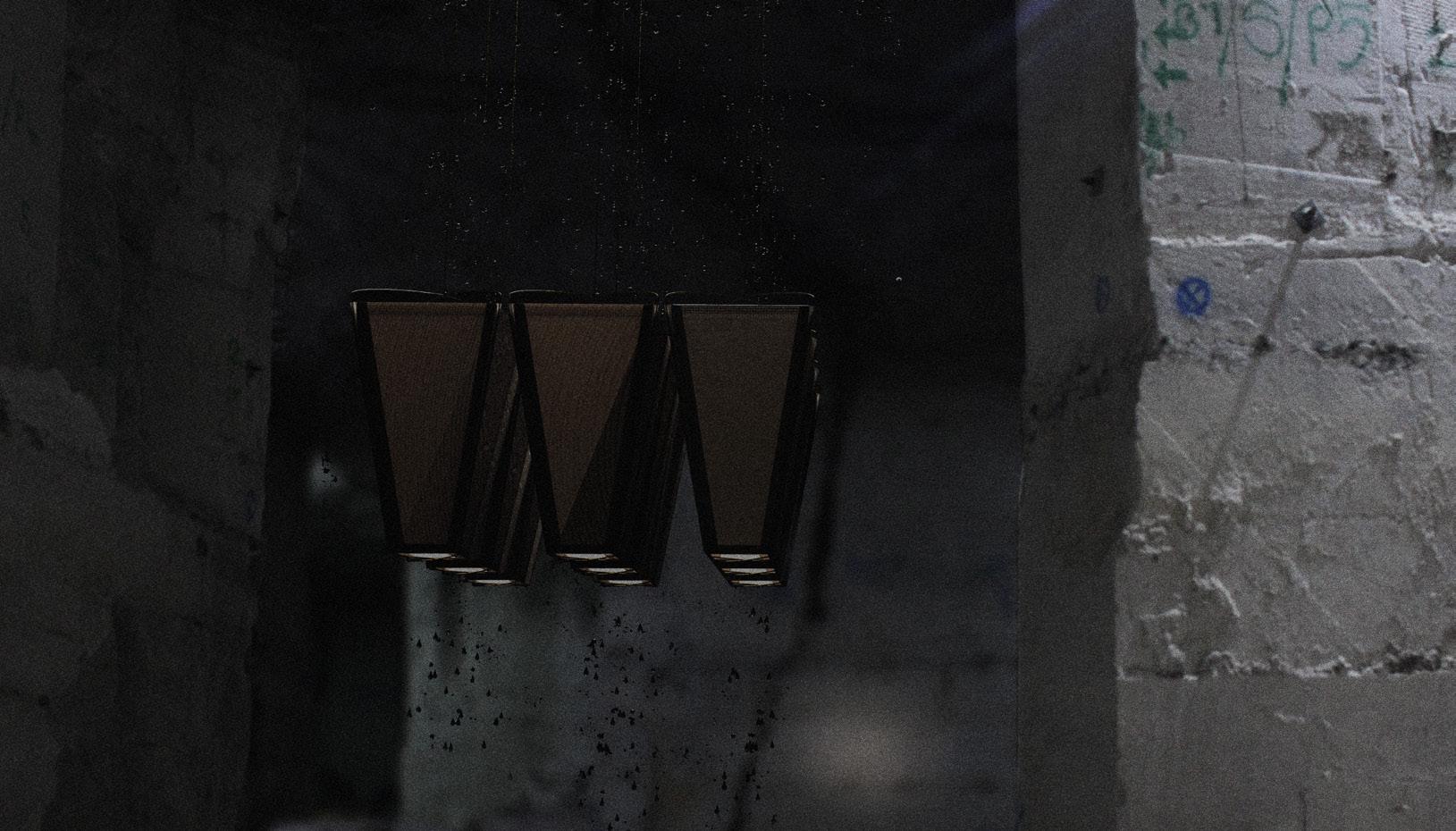

BSc Architecture Year 2
Location Barking, London
Typology Assisted living
Year 2023-2024
Sited in Barking, London, this project proposes a new style of assisted living, taking inspiration from town and village squares which encourage community gathering.
Apartments are arranged around several different social courtyards. Each apartment is unique, intended to represent the uniqueness of each inhabitant, even in older age the occupier feels ownership over their space. The 'streets' which connect apartments and the courtyards are lined with glass, creating the feel of a town street in a safe controlled manner. The building connects with the marsh and bird wildlife.
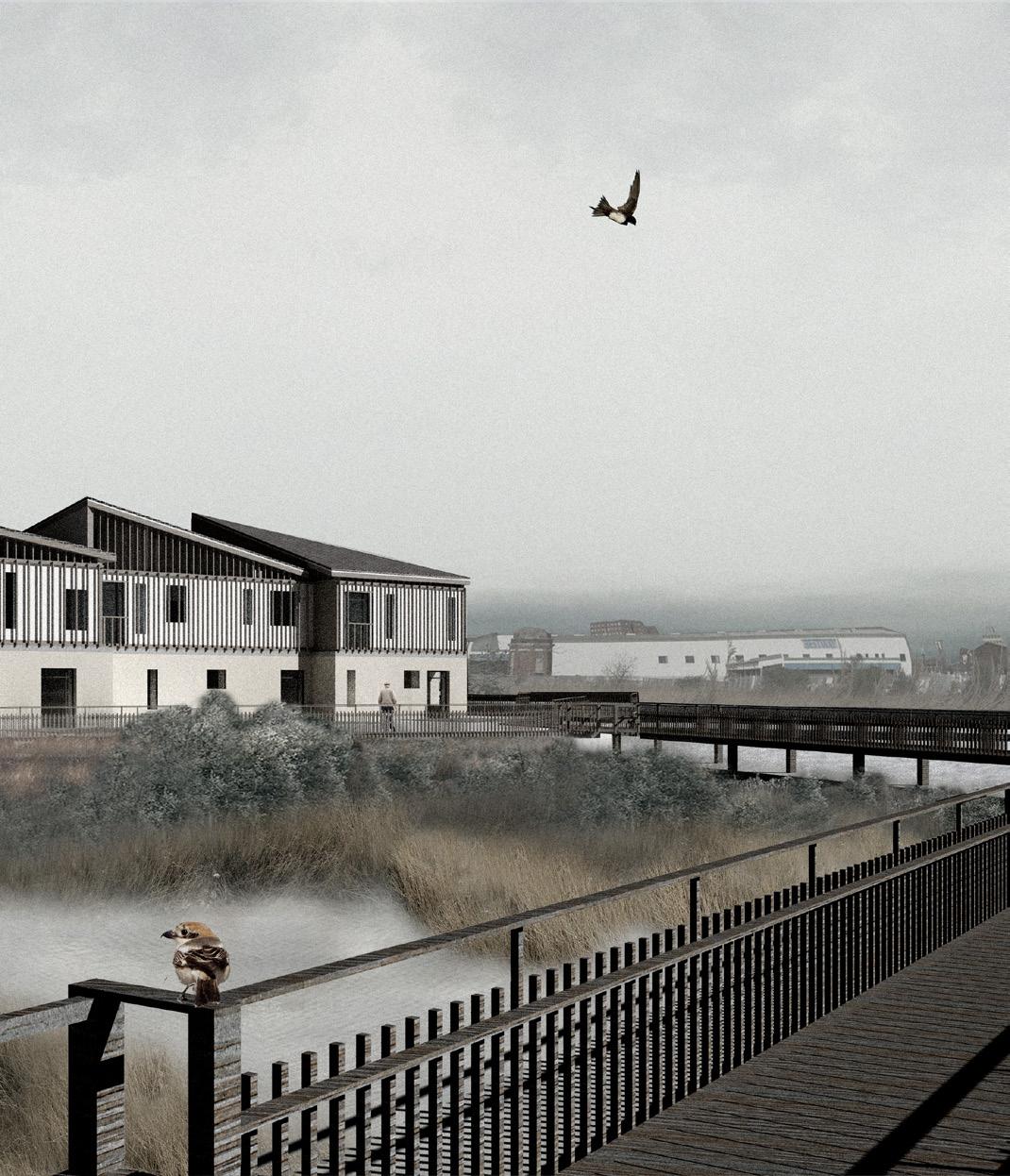
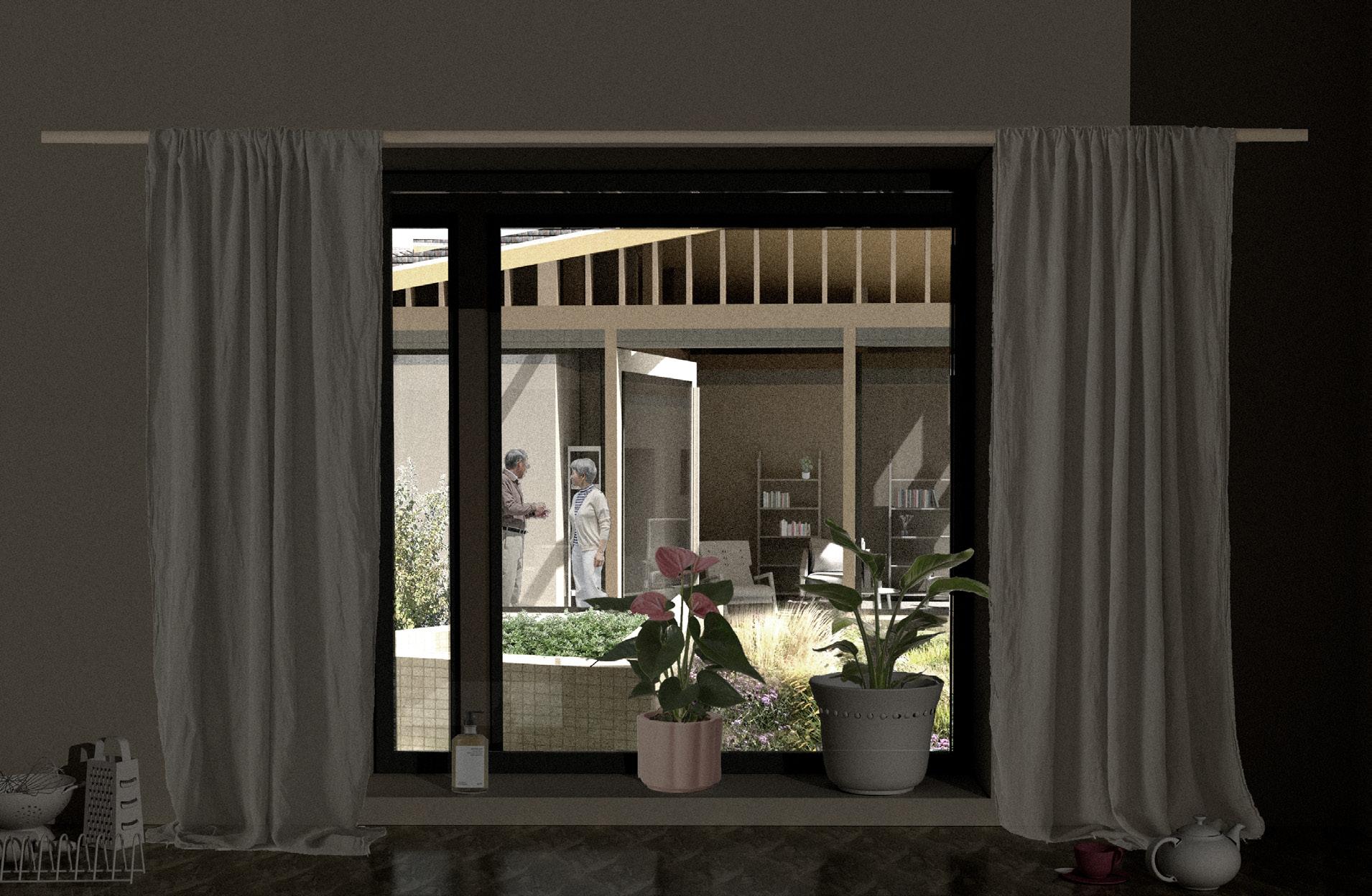
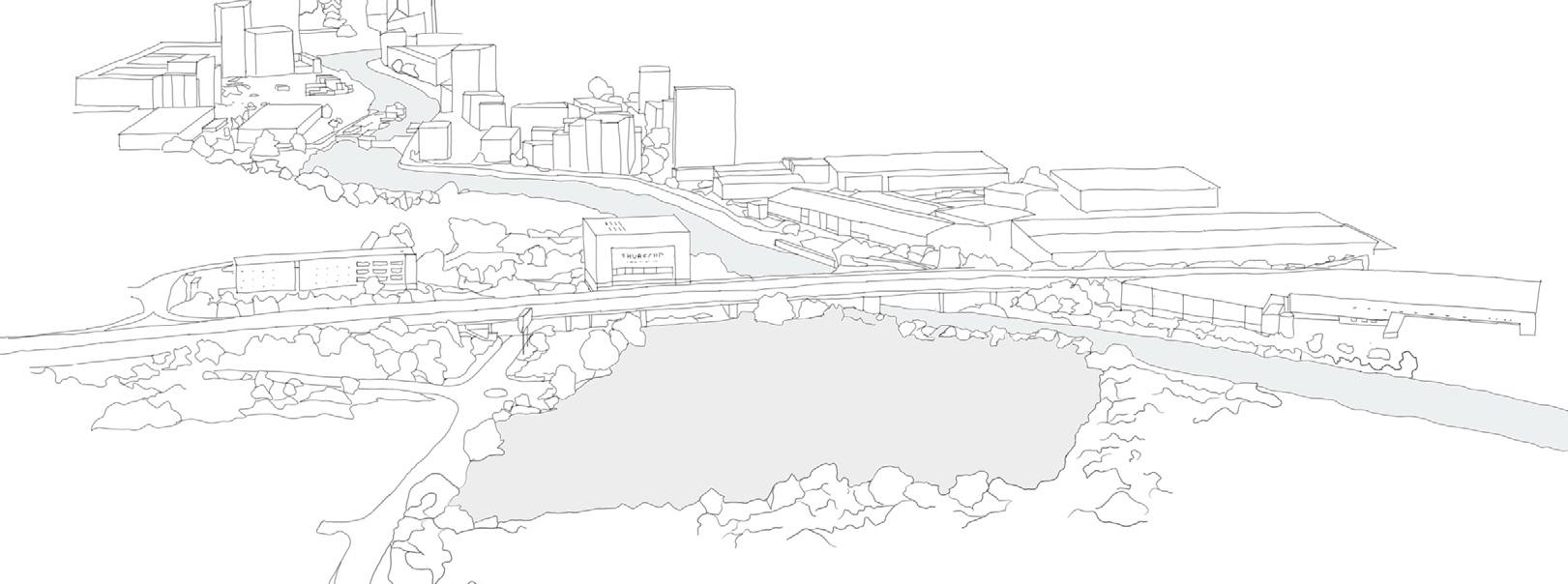


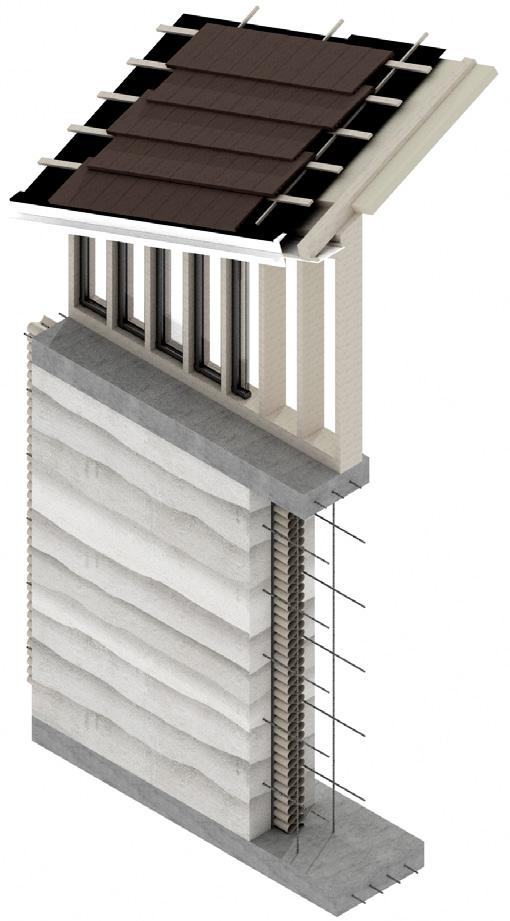
Bsc year 1 building project

1:50 copper and paper proposition model on site
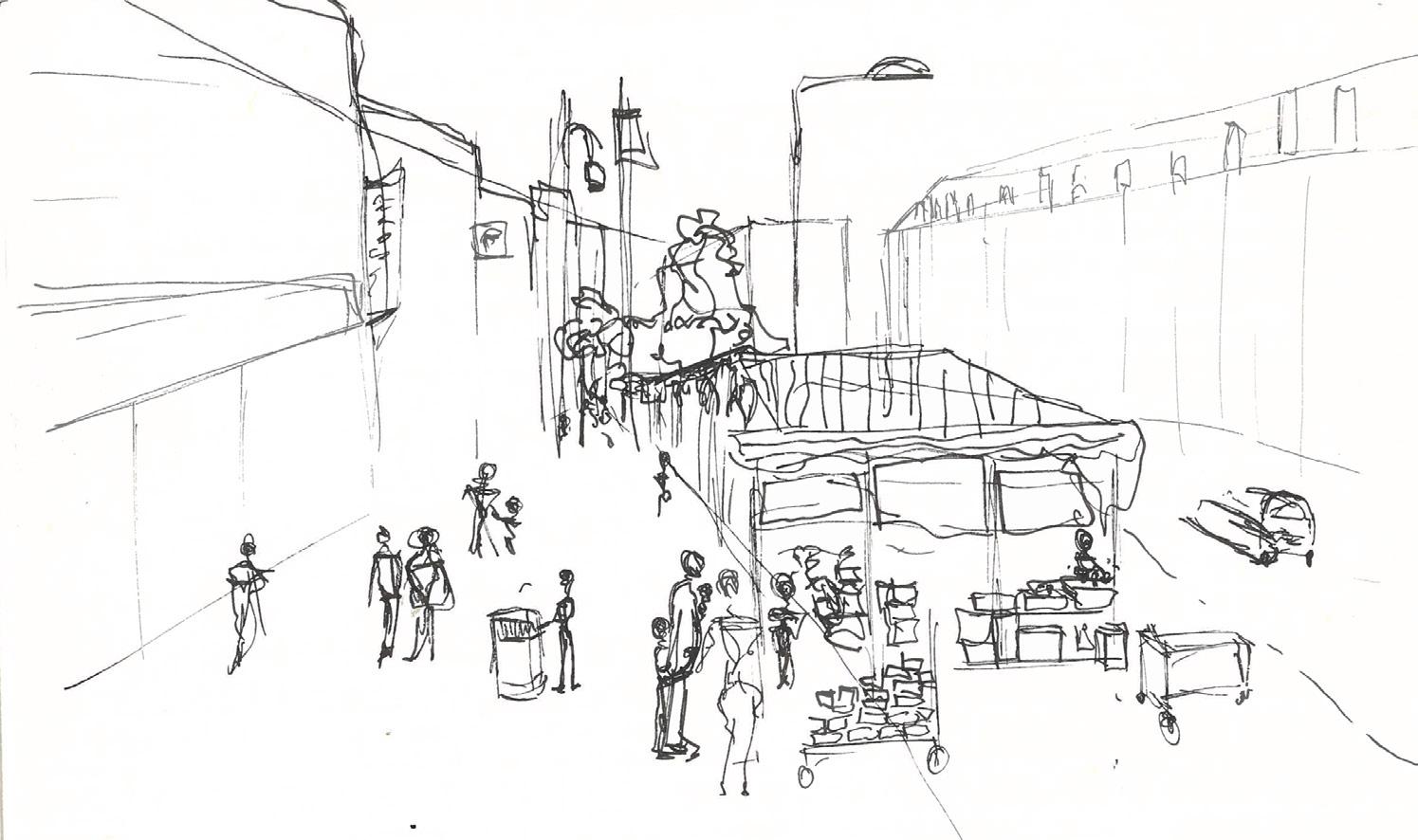
Site sketch
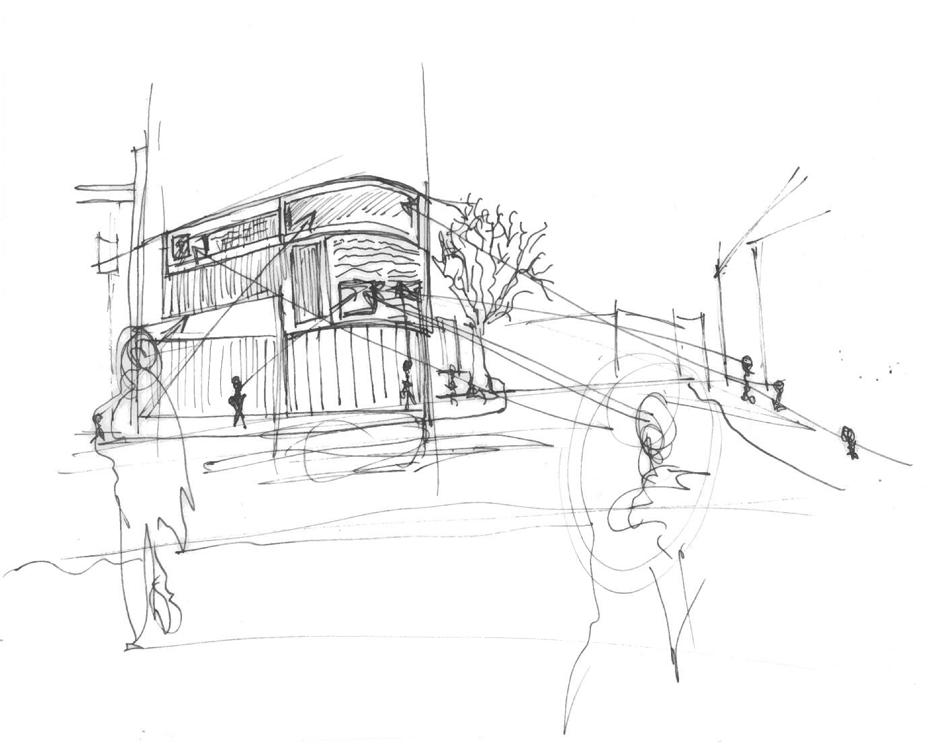

Proposition concept sketches